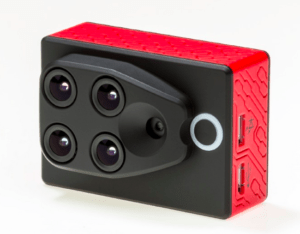 Parrot, the Paris-based technology company with a portfolio of drones targeted at the consumer market, is making a significant push into the commercial drone market. The spearhead of this effort is Sequoia, a multispectral sensor targeted at the agriculture market. But there is more to it than that.
Parrot, the Paris-based technology company with a portfolio of drones targeted at the consumer market, is making a significant push into the commercial drone market. The spearhead of this effort is Sequoia, a multispectral sensor targeted at the agriculture market. But there is more to it than that.
Parrot has been investing in and / or buying a number of firms with expertise in various aspects of UAS technology. These include Pix4D (a drone-based mapping platform), senseFly (manufacturer of aerial imaging drones), MicaSense (agricultural remote sensing), and Airinov (drone-based agricultural applications). While Parrot does not have previous experience in commercial drone solutions, their partner companies do.
In a phone conversation, Yannick Levy, VP Corporate Business Development at Parrot, discussed the Sequoia and Parrot’s entry into the commercial drone space. “Everyone knows the Parrot brand. But [to date] it has been consumer focused. This first step into the commercial space is significant, because it provides farmers a quick and easy way to get access to good sensors.” The goal, according to Levy, was to industrialize and manufacture completely autonomous commercial sensors for every drone.
In the view of Parrot, the Sequoia design allows the product to work successfully with any drone that connects to a GoPro. In theory, a farmer currently using, for example, a 3DR Solo, can now swap out the GoPro camera and install a Sequoia sensor system.
Levy said there were 3 reasons for choosing agriculture as the first commercial area to enter. First, it is viewed as the single biggest market for drones as referenced the AUVSI report on economic impacts of UAS. The Parrot solution aims to deliver the right sensors in the right drones at the right price. Second, Parrot’s founder “loves everything related to green” and the company has a real passion for helping the environment. Third, the agriculture market is one of “the easiest to address from a regulatory standpoint.” Agricultural drones fly over privately-owned areas devoid of people and largely free from the risk of wires, phone poles, trees, and large structures.
According to Levy, the Sequoia can help refine fertilization by detecting nutrient deficiency symptoms, optimizing pesticide input through early detection of biotic stress, controlling crop irrigation by identifying areas where water stress is suspected, and estimating crop yield by processing and exploiting agronomic indices.
Key Sequoia features include:
- A multispectral sensor that records images of crops in four distinct spectral bands: Green (500nm Bandwidth 40nm), Red (660nm Bandwidth 40nm), Red-Edge (735nm Bandwidth 10nm) and Near Infrared (790nm Bandwidth 40nm)
- A sensor equipped with an RGB camera (16 MP)
- A 64GB built-in memory
- A separate luminosity sensor (‘sunshine’ sensor) that records lighting conditions and automatically calibrates the four multispectral sensors. The sunshine sensor offers an SD card slot for additional storage capability
- Sequoia also embeds GPS and IMU
Parrot is expecting the product to be available in March for $3500. You can learn more and preorder the Sequoia from Parrot on their web site.
Frank Schroth is editor in chief of DroneLife, the authoritative source for news and analysis on the drone industry: it’s people, products, trends, and events.
Email Frank
TWITTER:@fschroth







Je voudrais Parler au telephone Avec yannick levy.
Je represente une societe de drones israelienne.